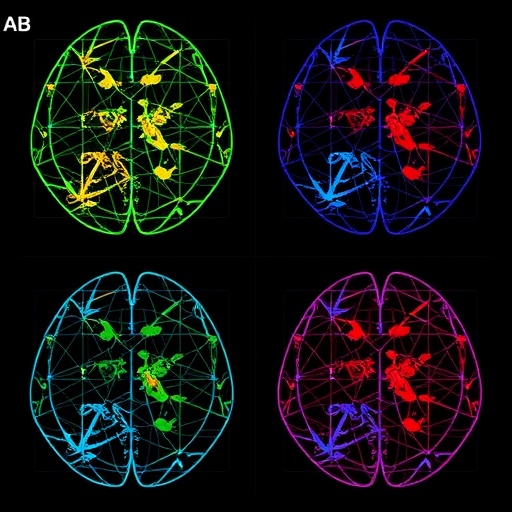In a groundbreaking study set to redefine our understanding of Alzheimer’s disease (AD) pathology, researchers have constructed a comprehensive spatiotemporal single-nucleus transcriptomic atlas of neurons within the entorhinal cortex–hippocampal (EC-HPC) circuit. This work, employing advanced Smart-seq2 single-nucleus RNA sequencing, delves into the intricate neuronal dynamics that unfold as AD progresses, providing unprecedented insights into the cellular and molecular alterations that hallmark this devastating neurodegenerative disorder.
Alzheimer’s disease profoundly impacts the EC-HPC circuit, a region essential for memory formation and cognitive processing. Prior research has highlighted the vulnerability of this circuit to early AD pathology, but the exact cellular trajectories and identity changes among neuron subtypes remained largely obscure. By isolating neurons from APP/PS1 transgenic mouse models—widely used for AD research—and wild-type controls, the study traces neuronal population shifts across multiple brain regions and disease stages, revealing pivotal mechanisms underlying disease progression.
A key revelation of the study is the identification of two main neuronal phenotypes with distinct trajectories during AD progression. First, the EC-stellate neurons exhibit a progressive decline. These excitatory neurons, integral to spatial memory encoding, appear highly susceptible to AD-induced stressors, suggesting their loss could be a primary driver of cognitive deficits observed in patients. This neuronal attrition reflects a loss of functional integrity within the EC-HPC circuit, disrupting hippocampal inputs essential for normal cognitive operations.
Conversely, the researchers documented a remarkable expansion of a subset of neurons expressing glial fibrillary acidic protein (GFAP), a marker traditionally associated with astrocytes rather than neurons. These GFAP⁺ neurons emerge predominantly from the CA3 region and proliferate across adjacent subfields, including CA1 and the entorhinal cortex. Their glia-like traits and spatial propagation imply a reprogramming event wherein neurons adopt noncanonical identities, potentially contributing to local inflammatory environments and neurodegenerative cascades.
The phenomenon of neuronal identity reprogramming challenges conventional paradigms, where neurons were thought to be terminally differentiated and stable in their transcriptomic profiles. This plasticity highlights an adaptive, though possibly maladaptive, response to chronic neuropathological stress. The emergence of GFAP⁺ neurons may reflect an attempt to cope with AD-induced injury or to compensate for lost neuronal functions, yet paradoxically, they could exacerbate tissue dysfunction through aberrant signaling and metabolic alterations.
Delving deeper into the molecular underpinnings, the transcriptomic data reveals significant disruptions in neuronal energy metabolism pathways during AD progression. Mitochondrial dysfunction, impaired oxidative phosphorylation, and dysregulated glucose metabolism emerge as consistent themes, correlating with neuronal vulnerability and degeneration. These metabolic derangements could amplify cellular stress, accelerate synaptic failure, and precipitate further neuronal loss.
Importantly, the study emphasizes spatial heterogeneity within the EC-HPC circuit, whereby neuronal subtype changes occur in a staged manner from specific hippocampal subregions spreading outward. This temporospatial mapping offers critical clues for pinpointing early biomarkers of AD and stratifying disease stages based on neuronal health and phenotypic shifts. Such granularity in understanding disease topography enhances the prospect of timely therapeutic intervention.
The use of APP/PS1 transgenic mice, coupled with rigorous Smart-seq2 methodologies, enables high-resolution profiling of single-nuclei transcriptomes, circumventing limitations of bulk tissue analyses that obscure cell-type-specific signals. This technical approach ensures that subtle yet crucial neuronal alterations are captured and characterized in their native anatomical context, setting a new standard for neurodegenerative disease research.
Clinically, these findings open new avenues for targeted interventions aimed at preserving EC-stellate neurons or modulating the emergence of GFAP⁺ neuron populations. Strategies aimed at stabilizing neuronal identity, restoring metabolic homeostasis, or preventing maladaptive reprogramming may hold therapeutic potential. Moreover, tracking these neuronal dynamics could refine diagnostics, enabling earlier detection based on molecular signatures reflective of underlying pathological processes rather than solely clinical symptoms.
The implications of neuronal identity plasticity in AD extend beyond mere pathological description; they compel a re-examination of cell-type definitions and resilience mechanisms in the brain. This underscores the necessity for integrative approaches combining transcriptomics, proteomics, and functional assays to fully elucidate the role and fate of neurons undergoing glial-like transformations.
This seminal atlas thus represents a vital resource for the neuroscience community, offering a detailed landscape of neuronal changes paralleling AD progression. It facilitates hypothesis generation and validation for novel biomarkers, mechanistic pathways, and therapeutic targets. Future studies based on this framework can expand to human models, verify translational relevance, and ultimately contribute to combating a disease that afflicts millions worldwide.
By illuminating the spatiotemporal choreography of vulnerable neuronal populations and their phenotypic transformations, this research redefines our conceptual framework of Alzheimer’s disease from a neurodegenerative process to one involving complex cellular identity shifts. The precision and depth of this work herald a new era in neurobiology, where understanding cellular plasticity within pathological contexts could revolutionize treatment paradigms.
In sum, this study’s insights into the interplay of neuronal loss, identity reprogramming, and metabolic dysfunction within the EC-HPC circuit offer a transformative perspective on Alzheimer’s disease. As the field progresses, integrating such advanced transcriptomic atlases with functional and imaging studies will be paramount in deciphering the multifaceted nature of this disease, ultimately paving the way for novel diagnostics and therapeutics.
Subject of Research: Not applicable
Article Title: Spatiotemporal characterization of disease-associated neurons in the entorhinal cortex-hippocampal circuit during Alzheimer’s disease progression
News Publication Date: 10-Jun-2025
Web References: http://dx.doi.org/10.1093/procel/pwaf042
Image Credits: Yuting Ma, Juan Zhang, Hankui Liu, Dingfeng Li, Sicheng Guo, Jialuo Han, Lei Wang, Shaojun Yu, Xi Su, Yongchang Gao, Xiumei Lin, A San, Yushan Peng, Guibo Li, Hui Jiang, Wei Wang, Huanming Yang, Jian Wang, Shida Zhu, Lijian Zhao, Jianguo Zhang, Qiang Liu
Keywords: Cells




